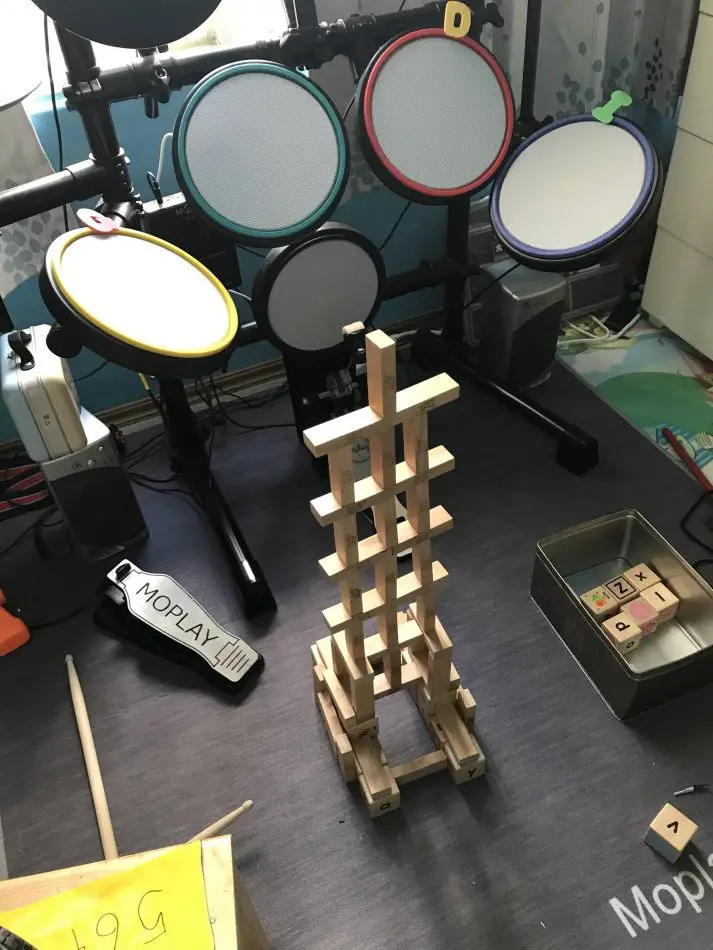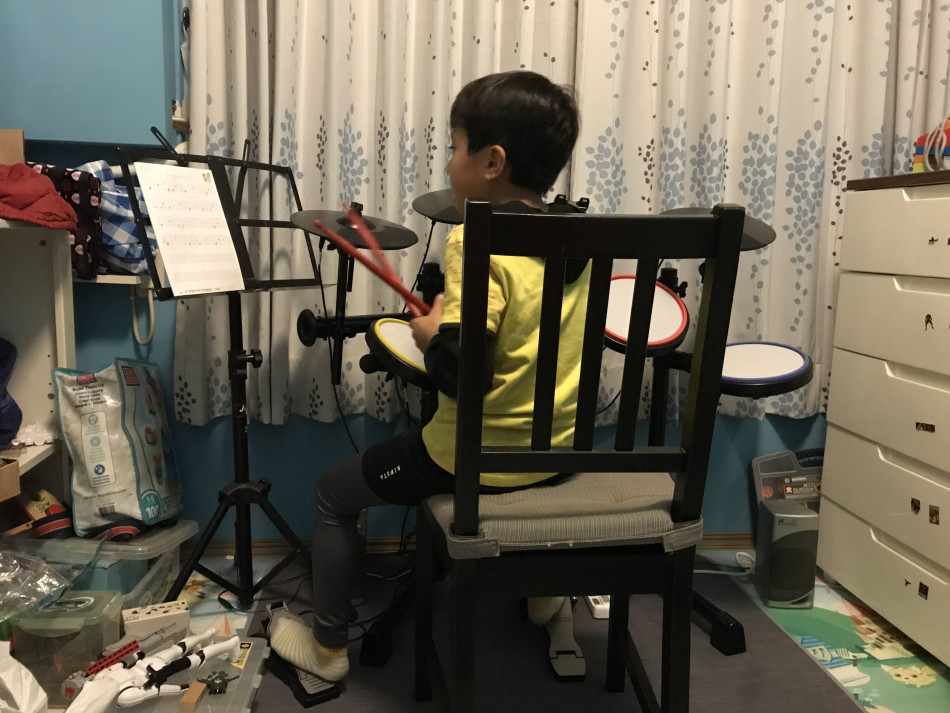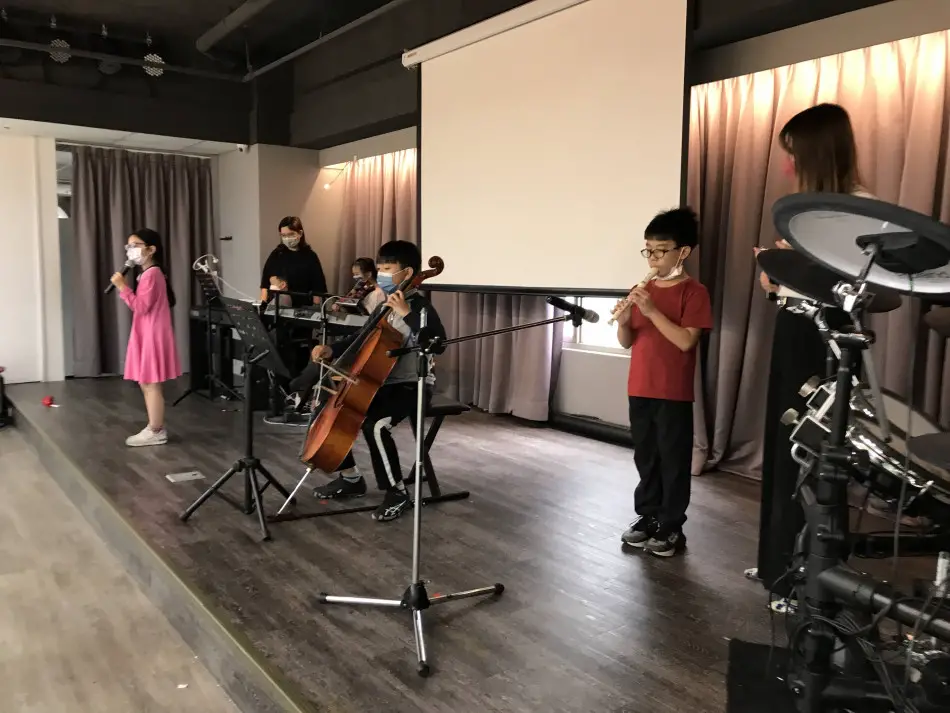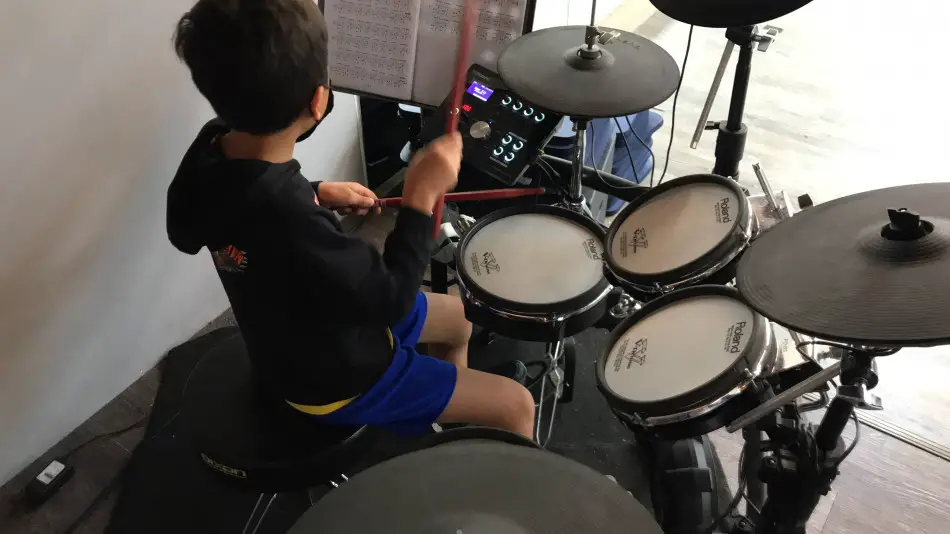This post contains affiliate links.
We always hear music is valuable for our children so how do get them to practice? I’m not a music teacher or a musician, so how in the world can I help my child? Let me show you what we can do as non-musical parents.
The best way to get kids to practice in homeschool is by setting a weekly schedule and recording the practice session. Thirty minutes to one hour of music practice at least 3 times per week is the minimum. Motivating them through encouragement and participation is useful to keep them interested.
Set a Schedule for Short But Regular Music Practice
Your homeschool schedule should include music practice time for your child at least 3 times per week as a minimum. Ideally, your child should practice every day to keep the skills fresh in their mind. This is age and level-dependent, but as a beginner, with elementary school kids you should start them out slowly. With most instruments, you can start with 10-15 minutes per time to get kids soft starting and not frustrated.

My wife, who is a music teacher suggests 30 minutes per day for intermediate-level students as a minimum. It’s best to set aside a one-hour block of time. And she says that music is a bit like math; you have to do a little every day or you will forget. When they forget hand placement, notes, or strings then they will get frustrated very easily. That leads to a cycle of discontent. Research does support frequent and shorter practices with a varied program that leads to the best results.
Varied Program of Practice Is Beneficial
Music calls for repetition for sure, however, the way you practice can also play a role in how well your child practices. In the beginning, if you don’t have an instrument yet, you may want to take time to review the notes and how to read music. You might also review music theory based on the lessons they have had and how to follow the tempo. The rudimentary parts of music lessons may not always need an instrument on hand at first.
If you have an instrument, practice can be varied by the type of practice. For example, their teacher might have them practice a familiar song they are better at first for warm-up. This also builds their confidence and they are in the right mood because they sense their competence. One of the greatest reasons kids quit music is an “internal” feeling of incompetence.
“Decisions to cease music instruction or playing an instrument were associated with diminished feelings of competence, relatedness, and autonomy, compared to when they were most engaged.”
The role of psychological needs in ceasing music and music learning activities – Paul Evans, Gary E. McPherson, Jane W. Davidson, 2013 (sagepub.com)
A typical practice session can be a combination of warm-up, practicing scales, chords or rhythm, a repertoire, and then a recap of what needs work on for next time. Your child should have a practice notebook where they can record the time, date, and details of their practice. This is good practice to follow whether or not their teacher assigns them this task.

Below is an example of what a practice session might look like, but if you have a teacher for your child, they will assign them practice. We just provide you with some suggestions if needed.
Piano Practice Session
| Practice Item | Beginners | Intermediate | Advanced |
|---|---|---|---|
| Scales | 3 minutes | 5-10minutes | 15-20 minutes |
| Rhythm | 3-5 times | 5+ times | 5+ times |
| Repertoire 1 | 3-5 times | 3-5 times | 3-5 times |
| Repertoire 2 | 3-5 times | 3-5 times | |
| Repertoire 3 | 3-5 times | 3-5 times |
Note: -Vary tempo for scales & rhythm from slow to fast, 3-4 steps
Violin Practice Session
| Practice Item | Beginners | Intermediate | Advanced |
|---|---|---|---|
| Scales | 3 minutes | 5-10minutes | 15-20 minutes |
| Rhythm | 3-5 times | 5+ times | 5+ times |
| Repertoire 1 | 3-5 times | 3-5 times | 3-5 times |
| Repertoire 2 | 3-5 times | 3-5 times | |
| Repertoire 3 | 3-5 times | 3-5 times |
Note: -Vary tempo for scales & rhythm from slow to fast, 3-4 steps
Drums Practice Session
| Practice Item | Beginners | Intermediate | Advanced |
|---|---|---|---|
| Rhythm | 3-5 times | 5+ times | 5+ times |
| Repertoire 1 | 3-5 times | 3-5 times | 3-5 times |
| Repertoire 2 | 3-5 times | 3-5 times | |
| Repertoire 3 | 3-5 times | 3-5 times |
Note: -Vary tempo for rhythm from slow to fast, 3-4 steps
Do You Have These Practice Books? This is for Skills and Technique
The Environment is Important for a Practice Room

An ideal environment is a quiet place where there is a room with a door, adequate lighting for the sheet music, and a proper music stand and chair. More on that later, but a proper environment includes things like no distractions from siblings or adults. And ideally, it’s best not to schedule practice time when everyone else is watching TV or doing something fun. Your child will feel left out for sure. Finally, an inner room without any windows is best, no daydreaming.
We recommend a sturdy adjustable music stand that is heavy enough to not be easily knocked over and foldable in case you want to take it on the run. A proper chair is also necessary eventually, depending on the instrument. For our son, there are special drum thrones as they are called like the one here. They are pretty cool, quick, and easy to adjust like a doctor’s stool.
Below are 2 basic types we like, you can choose a nice sturdy one or a lighter model if you will be moving around with it for a recital or outside performance.
Recommended Equipment
Parent Supervision Of Practice: In The Room!

I have to admit, my wife’s suggestion does make sense. We should be in the room when our children are practicing. We can supervise and help make sure they practice the proper amount of time. If we watch them we will be aware of any frustrations or difficulties they have. I used to just let my son practice by himself, then my wife (a music teacher) told me that is a bad idea.
She would always ask me how did practice go? And I’d tell her it sounded fine to me! Then she didn’t believe it and practiced with my son to find out he was not doing the right repertoire and number of times. As a non-musical parent, I honestly didn’t know this until I was sitting next to him watching. You might only need to do this in the beginning until your child has good discipline with practice.
Even if you aren’t a musician, you can use your phone and record the section of the music they are having trouble with and let the teacher know. They will be able to suggest solutions or some other practices improve that. You don’t have to be musically inclined to be participating. Music classes cost a good amount, so let’s make sure you instill a good practice routine early!
Parents Should Be With Students In Class To Aid Practice
The best way to aid your child with their practice is to participate in the lessons while they are being taught. When you attend the class with them you will see what the teacher is doing and you will know what needs to be practiced. And you will be able to ask questions and fully understand what and how your child will need to practice. This is assuming your lessons are out of the home in a music studio. If they come to your home, that’s even easier for you to attend.

This is not only our recommendation but the data shows that educators have verified that parental involvement is highly effective and a predictor of children’s continued success on a musical instrument. This means that without your involvement then the likelihood of them doing well or continuing playing is less likely. Unless you are a music teacher yourself, you will be most useful to your child in their practice routine if you attend with them in class.
“Research in music education indicates that parental involvement is beneficial to progress on a musical instrument. However, few music teachers are known to actively encourage it.”
Learning the piano: a study of attitudes to parental involvement | British Journal of Music Education | Cambridge Core
If you pay for the classes, then you have a right to see and witness what your child is learning. And many teachers we talk with encourage this as long as you observe and do not disturb. Certainly, we can understand that maybe not every teacher will like this. But it’s the best way to be involved if you are not a musician yourself!
Practice for Two Hours a Day Like Chopin Only for Professionals
Chopin the famous composer of many fine works insisted his student should only practice no more than two hours per day. So if your child is going pro, that’s fine! And as their level progresses, so will their practice time. By then, they should have the discipline to practice by themselves without much supervision.
I think this is similar to most homeschool studies. As the child gets older, the less we need to be by their side, but we still need to supervise them for sure! And this might be a little different for every child. Certainly, your kid might be self-taught and perfectly happy to practice their instrument all day long. If they are intrinsically motivated, great!
When Your Child Doesn’t Want To Practice? Pray!
That’s right when your kid doesn’t want to practice, just pray. That will help if you’re Christain. And you can also take a step back to evaluate why they don’t want to practice? As we stated earlier, if they feel frustrated and not competent, they are likely to feel like quitting. We got it and that’s when you should take a break and have a talk with your teacher. Is there something that needs adjusting?
With our son, when he runs into a section of music that is new and challenging, he can have a meltdown as well. We let him take a break and come back to practice at a slower tempo. A good metronome like the Korg is a great value and works like a charm.
I don’t know how to use the thing and I have downloaded the Tempo app (iOS) which is free and works just fine for me as well. We find, that slowing the tempo down usually works, and just practicing the bar of music that’s challenging.
How To Get Them Motivated To Practice In Homeschool?
This is a tough one for some families, we know. If you have done your best like start early, immerse them with music from a baby, and use Spotify, have you also tried a reward system to entice and motivate them? We wrote a helpful article about why you need to incorporate Spotify into your homeschool curriculum.
If your child is learning classical music, it may get boring for them at times. Our son learns drums and he loves to listen to ’80s and 90’s rock to find good beats to practice. We find listening to Spotify and letting him create his playlists has been fun for him. And it seems to motivate him to learn lyrics, explore music and find good songs to prepare and practice for a recital.
Have a Recital or Perform for the Family

Now, this is a good way to motivate by having your child work and practice towards a goal or purpose, a recital. With us, we have a few ways for this since we have joined a church worship team and he also is a part of a music school where they encourage yearly recitals. This is an excellent way to get them to choose a nice song they like. With us, it’s great, since he can choose fun songs. We did contemporary pop songs, rock, and also worship songs.
We also wrote another helpful article about why we feel it’s important to join a band in homeschool, please check it out.
Now if you don’t currently have any way to perform like this in a band or other venue, how about planning a family performance? This could be fun as well, where you could plan it during a family event or with friends. How you motivate them with rewards or other forms of motivation is up to your family. But you can get creative and let them perform. Being on a stage is a great motivator we find to get our son into music.
Should I Force My Child to Learn an Instrument?

If you are at your wit’s end and feel like the only way out is to force your child to practice or play an instrument, that’s going to be a short-term solution. Most likely they will quit and be done for good. My wife shared that as a child her parents did force her and she was grateful once she got over the hump of not wanting to practice. She felt if her parents didn’t force her, then she probably would have quit.
But we feel that’s the exception. Many ways can motivate, guide, and help your child to practice and continue playing a musical instrument. But forcing them is probably the last resort and not recommended.
Sometimes it’s ok to take a break and come back to it at a later date. Remember, the main reasons kids quit is they feel less connected and competent in playing and lose interest. Work on finding the reasons for the loss of interest and be involved with your children’s music experience. That’s the only way! If they are not practicing, or don’t have time to practice well, it’s time to take a break. If you don’t practice regularly, it’s just statistically not going to work.
Dadcarestoo is a participant in the Amazon Services LLC Associates Program, an affiliate advertising program designed to provide a means for sites to earn advertising fees by advertising and linking to Amazon.com. We also participate in other affiliate programs which compensate us for referring traffic.

